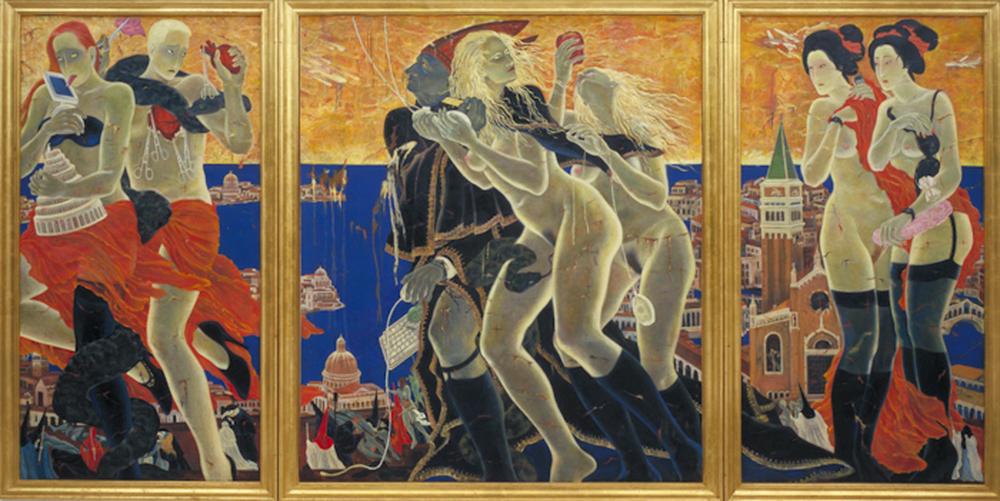Masami Teraoka. East Meets West

After traveling through Europe in the 1990s, Teraoka began to look more deeply at the history of Western art and its influence on American culture, asking himself, “how would Adam and Eve see American culture if they descended from Heaven today?”1 In large-scale altarpieces like Semana Santa/Cloning Eve and Geisha (2002–03), he layered Eastern and Western aesthetics, combining traditions of Japanese folding-screen painting with medieval and Renaissance Christian iconography into charged and chaotic contemporary narratives. At the center, two cloned Eves have been expelled from the Garden of Eden, seduced by computer mice and ushered by a cloaked Catholic clergyman with a snakelike phallus. On the left, two samurai are sexually transitioning while, on the right, two geishas appear entangled between past and present.
Masami Teraoka, in Masami Teraoka: A Conversation with the Artist, Asian Art Museum, San Francisco, October 21, 1997 (posted July 16, 2013), video, 26:39 minutes, available at [https://www.youtube.com/watch?v=j1q607TGdl4]. ↩︎